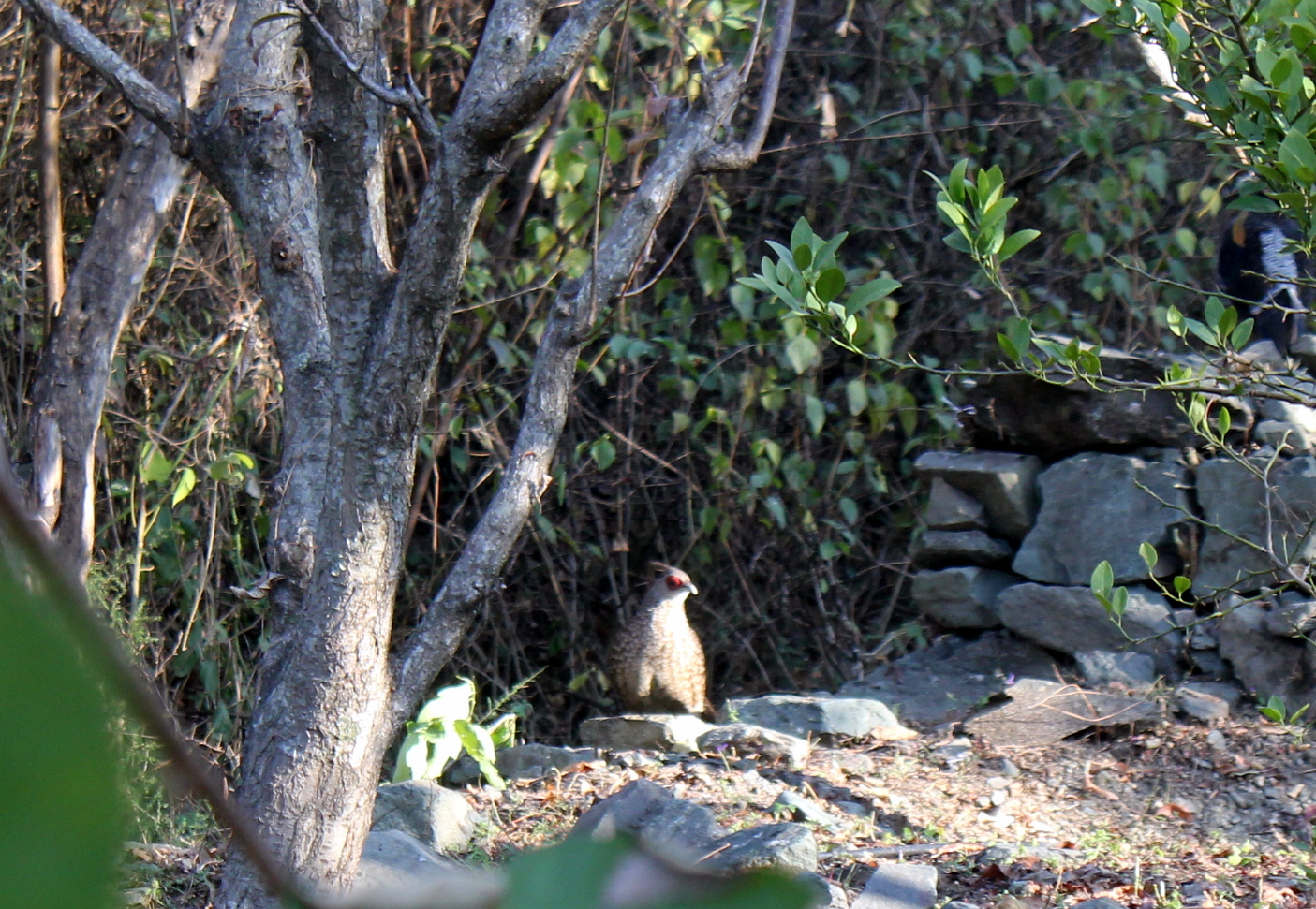Blessed By 'Bhutua'
Jungle fowl basking in the morning sun in an orchard.;

In the inner reaches of the Central Himalayas, especially in the Darma & Johar Valleys along the international border, inhabited by the Rang tribals (also called Shaukas or Bhotiyas) non vegetarian diet is quite common- since Himalayan heights are least conducive for agricultural production. Interestingly, even the surplus milk of goat, sheep or yak is condensed in this region to be processed into the form of a cheese called ‘chirki’.
It is consumed with dehydrated meat as survival ration and is a favourite among mountaineers, shepherds in their seasonal stay at alpine heights and high altitude porters. The tribal region of the Higher Himalayan valleys apart, meat-eating happened to be quite common in the entire hill region till recently. It is amusing to know that even with the so called high class Brahmins in hills (also known as ‘Chauthani brahmins’) among whom consumption of eggs, onion and garlic was considered to be utterly sacrilegious, eating mutton and venison by and large happened to be a way of life. Instead of buying the red meat from butcher’s shop the animal for meat, a goat invariably, would be slaughtered by them in-house and its meat would be sold among the community members.
(Bhutua being cooked).
Sacrificing animals at temple altars as an act of thanks giving and also on festive occasions was also quite common in hills and added on to the meat-eating culture. Upheld by the judiciary and supported by the masses, a ban however, has been imposed on it at certain shrines. Till recently in the entire expanse of the Central Himalayas, including the settlements in the foothills, poaching the forested slopes and farmlands for game like barking deer, mountain goat, jungle fowls, partridges etc was commonplace. The term for cooked red meat in common parlance in hills still being ‘Shikar’, one may easily make it out that how common the practice of hunting must have been in this region once.
Willful enforcement of stringent forest laws by the forest department and at places the hefty amount charged by the corrupt-to-the-core nexus of revenue police and some middle level forest officials in order to brush the inquiry against the offenders under the carpet, have definitely been instrumental in putting to disuse the easy trafficking of wildlife from the jungle or farmyard to the table. Quite a few old orchards, farms, estates and even resorts in the peripheral region of Nainital have now become sanctuaries of jungle fowls, barking deer and hares. Even Thar (an antelope now in red data book) may be seen roaming in the rural settlements of Bhimtal. Rallying of public opinion in favour of wild life, especially among the educated youngsters, has also been gaining currency from the much publicized concept in social media that consumption of red meat makes one savage and violent. For quite a few boarding schools and even resorts in Uttarakhand, abstention from non vegetarian diet is a signature statement in their prospectus or handouts.
(In preparation).
In the meanwhile, with mutton being sold from butcher’s shop at the rate of Rs 350/ kg and chicken for Rs 200/ kg the body parts of the slaughtered animal earlier considered to be non edibles -the innards especially- have made a market for itself under the name and title of ‘bhutua’ in the roadside eateries, which invariably turn into pubs in hills after sunset. Bhutua, initially eaten by the tribals of higher Himalyan region with the local brew, has now become the most favoured serving with alcohol among those in the unorganized sector , especially the Nepali and Bihari migrants working as labourers in hill regions. It is sold in eateries for Rs 20 a plate and Rs 120 a kg. It is worth knowing here that population wise per capita consumption of alcohol is much more than the per capita consumption of milk in Uttarakhand hills.
It will be of interest to know that meat being marketed in hills has seldom to pass through a quality or medical checkup. Slaughter houses are absent in most of the rural or semi-urban settlements in hills. For those government officials responsible for quality checks, their duty is more of an opportunity to earn some extra bucks. Near absence of registered cases against those selling mutton or white meat in the urban districts of the Central Himalayas in past two years corroborates this premise and bears a testimony to the lackadaisical attitude of the government machinery. The situation in the rural pockets where alcoholism is rampant and the govt machinery is in paid holidays, what must have been the health scenario of the bhutua-consuming population is open to speculation.
(Written under the aegis of CSE Media Fellowships)
pant.rajshekhar@gmail.com

